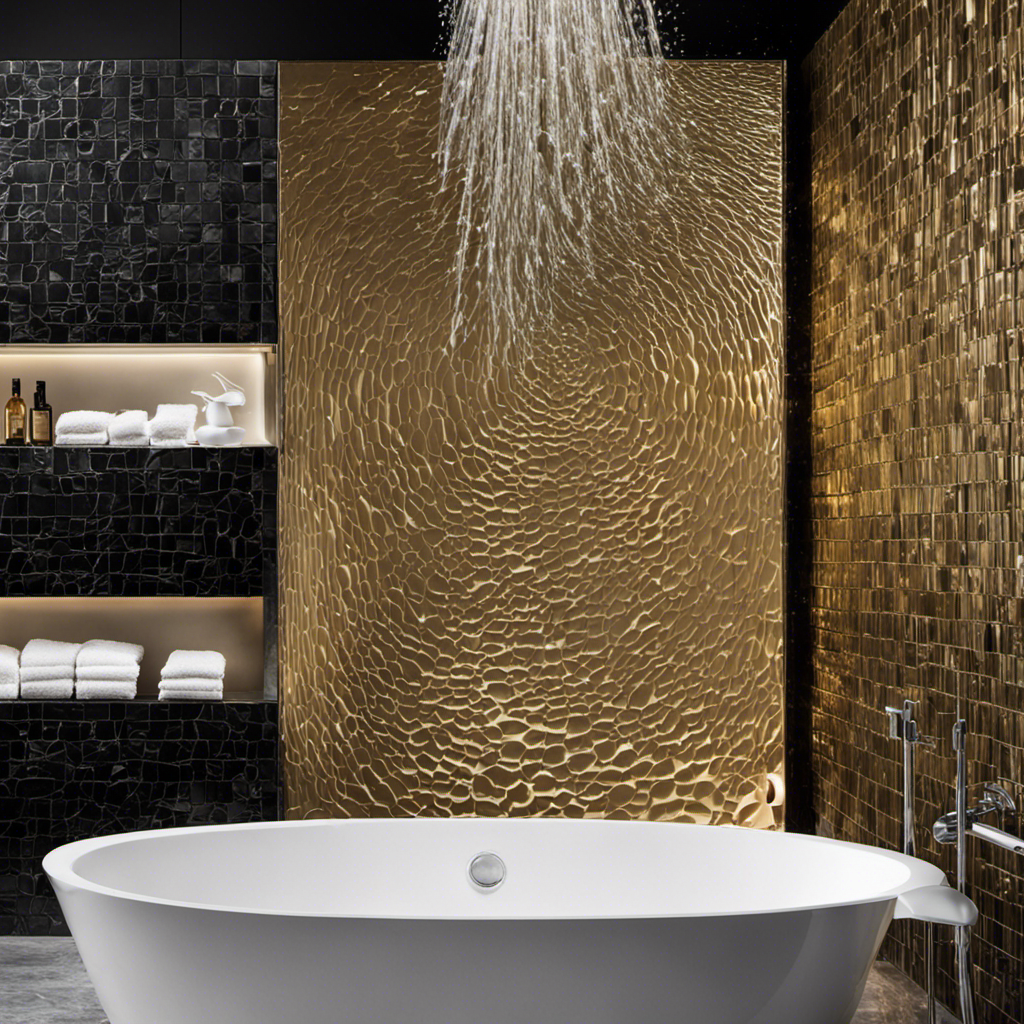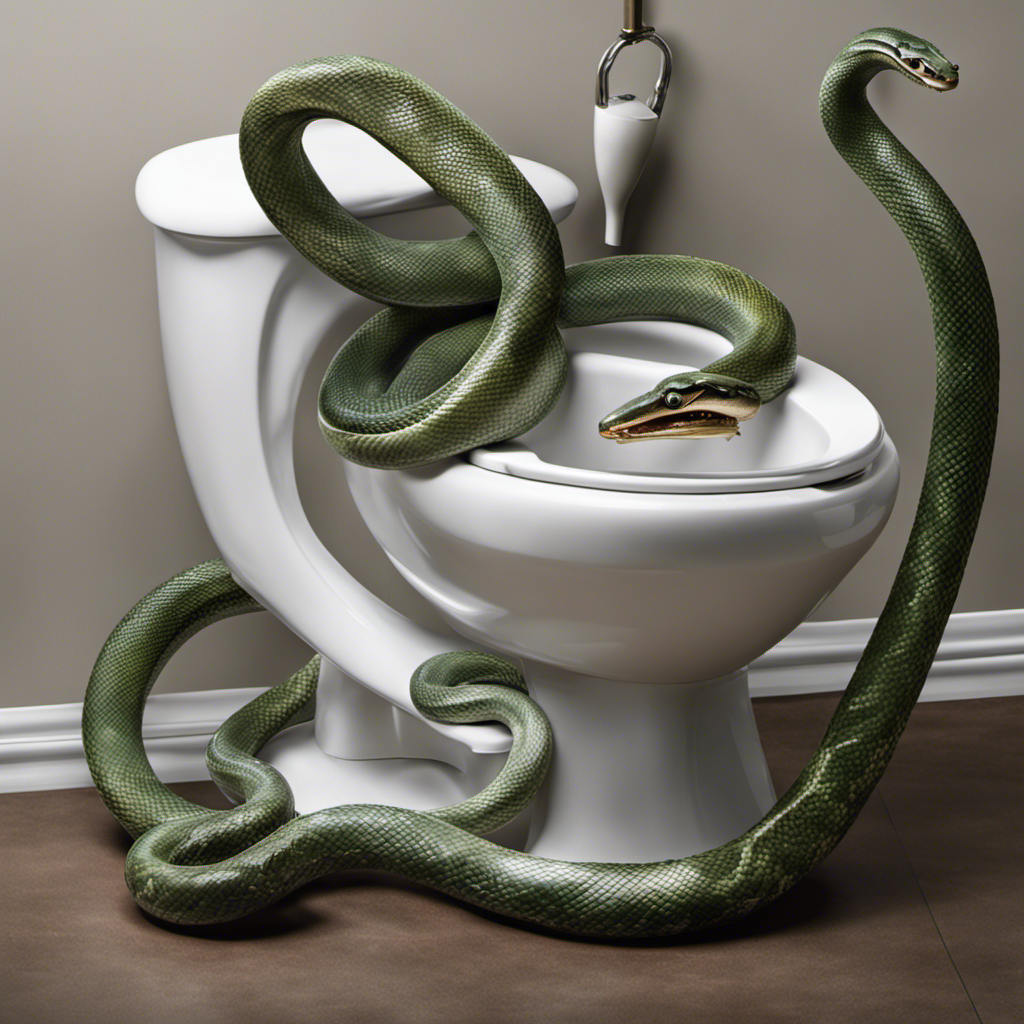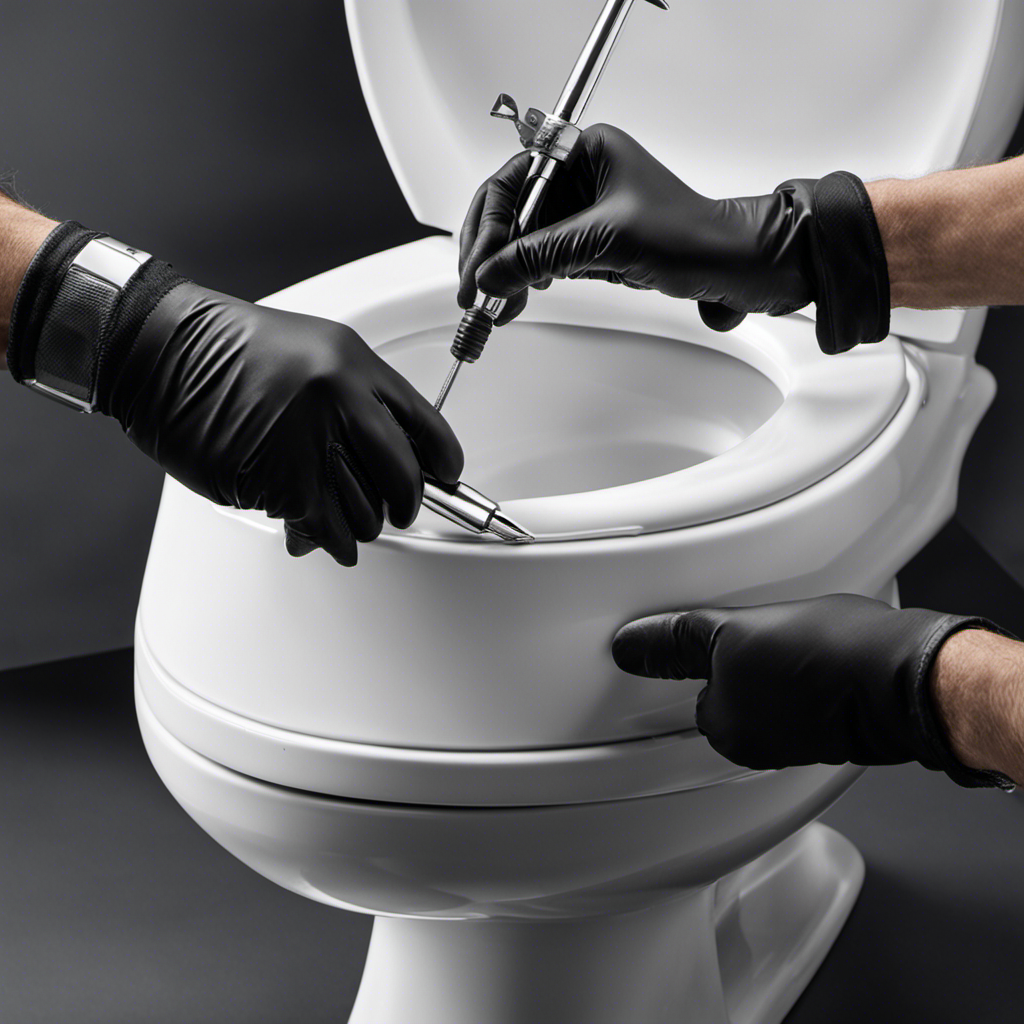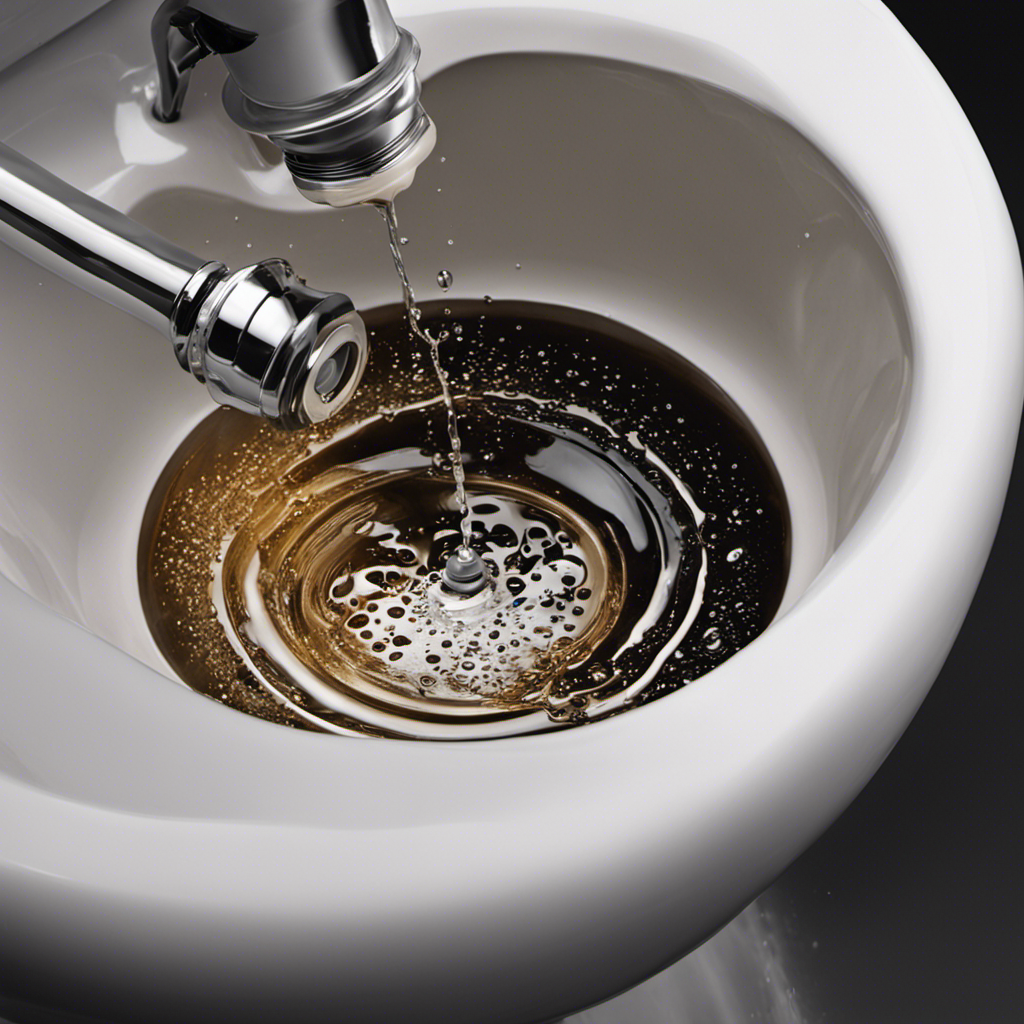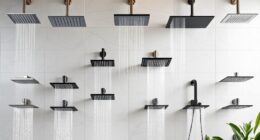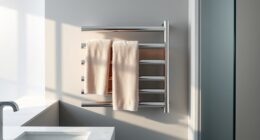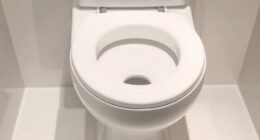As a homeowner, I’ve dealt with my fair share of plumbing issues, but one that always catches me off guard is when my toilet starts bubbling when the tub drains.
It’s a frustrating situation that can leave you scratching your head and wondering what on earth is going on.
In this article, I’ll explore the common causes of this phenomenon, explain how the plumbing system in your home plays a role, and provide some tips on how to fix the problem.
So, let’s dive in and get to the bottom of these pesky toilet bubbles.
Key Takeaways
- Clogged sewer vent can cause negative pressure and result in toilet bubbles when the tub drains.
- Direct connection between the toilet bowl and the bathtub increases the likelihood of bubbles.
- Regular maintenance and cleaning of the plumbing system can prevent future clogs and reduce the occurrence of toilet bubbles.
- Hair clogs are a common cause of drain issues, and using drain strainers, regular cleaning, and DIY drain cleaners can help prevent hair clogs and maintain smooth drainage.
Common Causes of Toilet Bubbles When Tub Drains
One of the most common causes of toilet bubbles when the tub drains is a clogged sewer vent. When the sewer vent becomes clogged, it restricts the flow of air and causes negative pressure in the plumbing system.
As a result, when water is drained from the bathtub, it creates a suction effect that pulls air from the toilet bowl, causing bubbles to form. This phenomenon is more likely to occur if there is a direct connection between the toilet bowl and the bathtub.
To fix this issue, it is important to unclog the sewer vent by using a plumber’s snake or calling a professional plumber. Regular maintenance and cleaning of the plumbing system can also help prevent future clogs and reduce the occurrence of toilet bubbles when the tub drains.
Understanding the Plumbing System in Your Home
Understanding the plumbing system in your home can help you identify and address issues like bubbling when the tub drains. Plumbing maintenance is crucial to prevent such problems.
The plumbing system consists of various components that work together to ensure the smooth flow of water and waste. The main components include pipes, fixtures, valves, and drains.
DIY plumbing fixes can be done for minor issues, but for more complex problems, it is advisable to seek professional help. Regularly inspecting your plumbing system, checking for leaks, and clearing any clogs can help prevent bubbling in your toilet when the tub drains.
It is also important to understand the proper use and maintenance of your plumbing fixtures to avoid any potential issues.
Identifying a Clogged Drain as the Culprit
In my experience, one of the most common causes of plumbing system malfunctions is a hair clog. These clogs can wreak havoc on your drains, causing slow drainage, backups, and even foul odors.
While there are DIY methods to clear a hair clog, sometimes it’s best to leave it to the professionals who have the necessary tools and expertise for a thorough drain cleaning.
Plumbing System Malfunction
When the toilet bubbles, it’s likely due to a malfunction in the plumbing system. This can be caused by various issues that require immediate attention. Here are three common plumbing system malfunctions that can lead to toilet bubbling:
-
Clogged Vent Pipe: A blocked vent pipe restricts the flow of air, causing pressure to build up and force air bubbles through the toilet bowl.
-
Sewer Line Blockage: A clogged sewer line can cause wastewater to back up, leading to bubbles in the toilet. This usually requires professional assistance to resolve.
-
Faulty Toilet Flapper: A malfunctioning flapper can cause an imbalance in the water flow, resulting in bubbles when the toilet is flushed.
To prevent and troubleshoot these toilet issues, regular plumbing system maintenance is crucial. However, sometimes a hair clog can also be the underlying cause of such problems.
Hair Clog Causing Issue
If you’re experiencing slow drainage and water backing up in your sink or shower, it’s likely that a hair clog is causing the issue. Hair is one of the most common culprits for clogged drains, as it easily gets tangled and accumulates over time. To prevent hair clogs, there are a few simple steps you can take. First, use a drain strainer or stopper to catch any loose hairs before they go down the drain. Second, regularly clean the drain by pouring boiling water down it to help dissolve any buildup. Lastly, consider using a DIY drain cleaner made of vinegar and baking soda to break down any existing clogs. By following these hair clog prevention and DIY drain cleaning techniques, you can keep your drains flowing smoothly.
| Hair Clog Prevention | DIY Drain Cleaning Techniques |
|---|---|
| Use a drain strainer or stopper | Pour boiling water down the drain |
| Regularly clean the drain | Use a DIY drain cleaner made of vinegar and baking soda |
Professional Drain Cleaning?
You may want to consider hiring a professional to clean your drains. When it comes to dealing with drain issues, it’s essential to have a thorough understanding of the problem at hand. Here are three reasons why a professional drain cleaning service is the way to go:
-
Expertise: A professional drain inspection will identify the exact cause of the problem, whether it’s a clog, a broken pipe, or a root intrusion. Their knowledge and experience enable them to provide the most effective solution.
-
Specialized Equipment: Professional drain cleaners use advanced tools and techniques to tackle even the toughest clogs. From high-pressure water jets to drain snakes, they have the right equipment to ensure a thorough and lasting cleaning.
-
Long-term Savings: By opting for professional drain cleaning, you can prevent future issues and costly repairs. Their expertise and thorough cleaning will keep your drains functioning properly for a long time.
While DIY drain cleaning techniques may work temporarily, investing in a professional service ensures a more comprehensive and reliable solution.
The Role of Air Ventilation in Preventing Toilet Bubbles
The role of air ventilation in preventing toilet bubbles is crucial for maintaining proper plumbing function. When the tub drains, it creates a sudden change in air pressure within the plumbing system. Without proper ventilation, this change in air pressure can cause air bubbles to form in the toilet bowl, resulting in unwanted bubbles and potential clogs.
To prevent this, it is important to ensure that your bathroom has adequate ventilation. This can be achieved by installing an air vent or a ventilation fan in the bathroom. Regular bathroom maintenance, including keeping the vent or fan clean and in good working condition, is essential to maintain proper air flow and prevent toilet bubbles.
Proper air ventilation not only helps prevent bubbles but also ensures the overall health and functionality of your plumbing system.
Potential Issues With the Sewer Line Connection
When it comes to potential issues with the sewer line connection, there are three main culprits to consider: a leaking sewer line, a clogged drain pipe, and a malfunctioning ventilation system.
A leaking sewer line can lead to water damage and unpleasant odors, while a clogged drain pipe can cause backups and slow drainage.
Meanwhile, a malfunctioning ventilation system can result in poor air quality and increased humidity levels.
Identifying and addressing these issues promptly is crucial to maintaining a well-functioning plumbing system.
Leaking Sewer Line
If your toilet bubbles when the tub drains, it’s likely due to a leaking sewer line. This is a common issue that can lead to more serious problems if not addressed promptly. Here are three key things you need to know about a leaking sewer line:
-
Leaking pipe: A leaking sewer line can occur due to various reasons such as corrosion, tree root intrusion, or shifting of the ground. The leak allows wastewater to escape into the surrounding soil, leading to potential contamination and health hazards.
-
Sewer backup: When a sewer line is leaking, it can cause a backup of sewage in your home. This can result in foul odors, unsanitary conditions, and damage to your property. It is important to address the issue promptly to prevent further damage.
-
Professional intervention: Fixing a leaking sewer line requires the expertise of a professional plumber. They will assess the extent of the damage, determine the cause of the leak, and recommend the appropriate repair or replacement solution.
A leaking sewer line can be a serious problem that requires immediate attention. However, it is important to note that a leaking sewer line can also lead to a clogged drain pipe, which we will discuss in the next section.
Clogged Drain Pipe
Addressing a clogged drain pipe promptly can prevent further damage and potential plumbing issues. When faced with a hair clog, it is important to tackle the problem head-on.
DIY drain cleaning methods can be effective in removing these pesky clogs. Start by using a plunger to create a strong suction and dislodge the hair. If that doesn’t work, try using a drain snake or a wire coat hanger to physically remove the clog.
Another option is to mix baking soda and vinegar to create a natural cleaning solution that can dissolve the hair. Remember to flush the drain with hot water afterwards to clear any remaining debris.
Ventilation System Malfunction?
Check if your ventilation system is functioning properly by listening for any unusual sounds or noticing a decrease in air circulation. A malfunctioning ventilation system can lead to potential health risks and poor indoor air quality.
Here are three important maintenance tasks you should perform regularly to keep your ventilation system in top shape:
-
Clean or replace air filters: Clogged or dirty filters can restrict airflow and reduce the efficiency of your ventilation system. Regularly cleaning or replacing filters will ensure proper air circulation and prevent the buildup of dust, allergens, and other pollutants.
-
Inspect and clean air ducts: Over time, dust, debris, and mold can accumulate in your air ducts, impairing the system’s performance and potentially causing health issues. Regular inspection and cleaning of air ducts will help maintain good indoor air quality.
-
Check and maintain fans and motors: Faulty fans or motors can result in poor air circulation, leading to stagnant air and potential mold growth. Regularly inspect and maintain these components to ensure proper functioning and reduce the risk of health problems associated with poor ventilation.
How to Check for and Fix a Faulty Toilet Flapper
The first step in fixing a faulty toilet flapper is identifying the issue. If your toilet is constantly running or not flushing properly, the flapper may be to blame. To troubleshoot the problem, start by removing the tank lid and observing the flapper’s behavior during a flush.
If the flapper doesn’t seal properly or stays open, it needs to be replaced. Turn off the water supply to the toilet and flush to drain the tank. Next, disconnect the flapper chain and remove the old flapper from the flush valve. Install the new flapper by aligning it with the flush valve opening and attaching the chain.
Seeking Professional Help for Persistent Toilet Bubbles
If persistent toilet bubbles continue to be a problem, it may be wise to seek professional help. This could indicate a more serious issue with your toilet venting or plumbing system that requires expert attention. Here are three reasons why a plumbing inspection should be considered:
-
Identify the underlying cause: A professional plumber can accurately diagnose the source of the toilet bubbles. They will inspect the venting system to check for any blockages or obstructions that may be causing air to escape through the toilet bowl.
-
Prevent further damage: Ignoring persistent toilet bubbles can lead to more serious plumbing problems, such as sewer backups or leaks. By seeking professional help, you can address the issue early on and prevent costly repairs down the line.
-
Ensure proper functioning: A plumbing inspection will not only fix the current issue but also ensure that your toilet venting system is working properly. This will prevent future problems and maintain the overall efficiency of your plumbing system.
Conclusion
In conclusion, it’s essential to address toilet bubbles when the tub drains as they can indicate underlying plumbing issues.
By understanding the plumbing system in your home and identifying a clogged drain as the culprit, you can start troubleshooting the problem.
Additionally, ensuring proper air ventilation and checking for issues with the sewer line connection is crucial.
If all else fails, seek professional help to resolve persistent toilet bubbles.
Remember, a stitch in time saves nine when it comes to plumbing problems.
